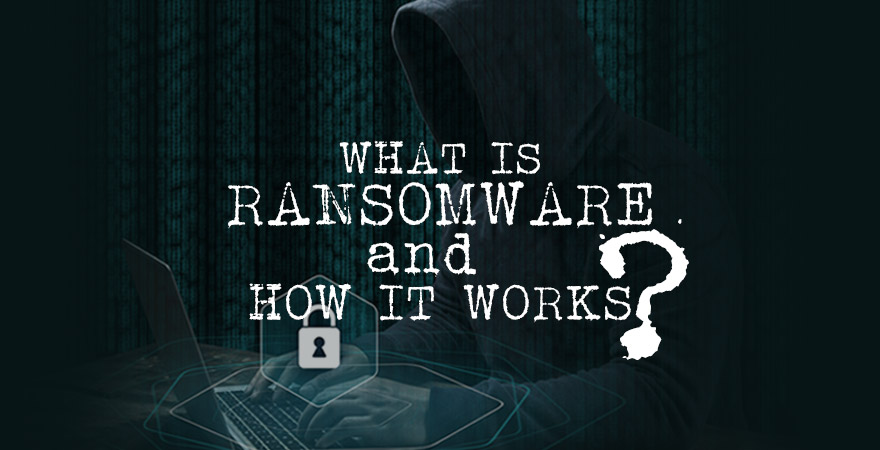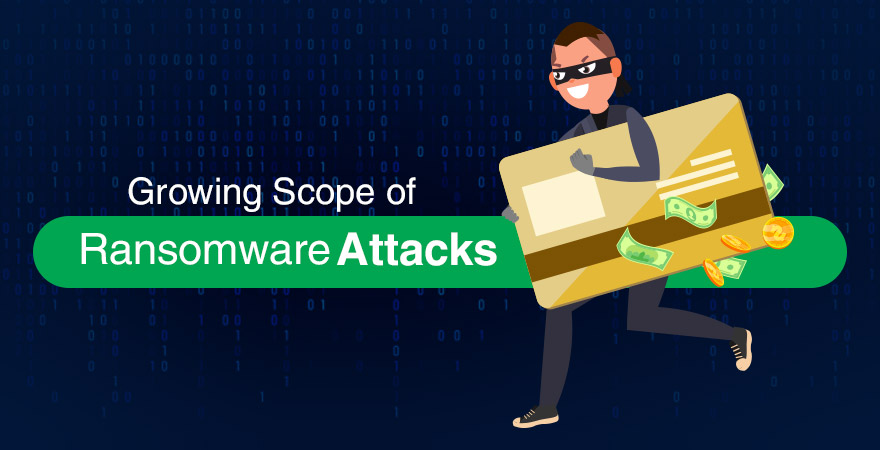With New Year celebrations behind us, we focus our attention and efforts towards the challenges that come along with it. With every passing day, our reliance on the internet in general and technology in particular is constantly on the rise.

The speed and convenience that technology powered solutions bring to our lives at times tend to make us oblivious of the accompanying risks. Most of the information and communication technologies today are directly or indirectly powered by the internet.
Also Read:
- 7 Aspects of a Secure Transition to the Cloud
- Security Benefits of Cloud Computing Solutions
- Top 11 Guidelines for Cloud Security in 2020
- 6 Vital Features of Securing Your Cloud
The internet is absolutely vast and crawling with threats or nefarious actors that are lying in wait for the slightest of vulnerability. Ironically, most routine users of the internet are either ignorant of cyber threats or don’t bother to take them much seriously.
It is often after exposure to a successful cyber-attack that internet users realize the potential damage that has been inflicted. For a moment, just consider the simplest scenario of your personal email account getting hacked. A large part of our personal and professional lives reside in the inbox of our email account.
Let’s expand the above simple example to discuss a very damaging and rapidly proliferating cyber attack called Ransomware.
What is Ransomware?
In a Ransomware attack, a cyber-criminal will infiltrate your personal computer or network and encrypt your entire data. In exchange for decrypting your data, the offender will demand a ransom, failing which all your priceless data will be mercilessly deleted or destroyed forever.

Even in scenarios where you end up paying the ransom, you can never be certain of retrieving your data. The power dynamics of a successfully orchestrated ransomware attack are so heavily pitched in favor of the offender that the victim feels powerless in this entire scenario.
Why is Ransomware Proliferating?
The internet comes with its own set of challenges and anonymity is one of those. As your skills in networking get honed, it becomes much easier to cloak your actual identity and location in so many layers that unboxing them is simply not possible.
Another challenge with pursuing and prosecuting the perpetrators of ransomware attacks are jurisdictional challenges. The internet knows no geographical boundaries. A cyber criminal sitting in Russia may launch a ransomware attack somewhere in the USA.
Even in the rare scenarios where the actual perpetrators of ransomware attacks are traced, the jurisdictional challenges are so complex that Law Enforcement Agencies (LEA) feel incapacitated to pursue the offense. This makes ransomware a highly coveted and sought after weapon within cyber crime.
Lastly, most people in general and organizations in particular feel more inclined towards secretively paying ransom instead of pursuing other alternatives. Individuals feel desperate to retrieve their data at the earliest and don’t want to risk reporting the matter to LEAs and losing their data in the process.
Organizations on the other hand downplay ransomware attacks to avoid a publicity nightmare and risk losing valuable customers they built over many years. Just to give some perspective, the estimated sum paid to cyber criminals as ransom is easily estimated at $12 Billion in year 2019.
This whopping figure alone is sufficient to act as a motivator for the rapid proliferation of ransomware across the globe. At the same time, it comes as a painful reminder for all users of the internet, regardless of skill level, that ransomware is a cyber-threat that simply cannot be taken lightly.
Growing Scope of Ransomware
A worrisome factor in ransomware is that its influence is increasing both horizontally and vertically. Getting motivated by huge ransom payments, more cyber criminals are diverting their efforts, skills and expertise to orchestrate and execute ransomware attacks.

When cyber thugs realize that people and organizations are willing to pay handsome amounts as ransom in exchange for their data, they feel the urge to further raise the stakes. Currently, USA in particular is experiencing ransomware attacks on local, state and federal institutions.
Ransomware and State Organizations
Government organizations, regardless of whether they are at state or federal level, contain highly sensitive and personal data of millions of citizens. This data plays an instrumental role in smooth governance and managing the provision of civic facilities to residents.
The foremost intent of any ransomware attack is to disrupt the entire state apparatus that is managing the provision of all such facilities. Any such disruption causes chaos and frustration among the affected population. In addition to feeling embarrassed, state organizations also tend to lose their writ due to such incidents.
The secondary objective cyber criminals achieve from such attacks is that before encrypting the victim’s data, they make a copy of that sensitive data. This data is then bifurcated and sold in bits and pieces to various nefarious actors over the elusive but thriving Dark Web.
Some examples of this sensitive data can be social security numbers, medical records, credit card information, bank account details and much more. Over the past few months, both state and federal level institutions are experiencing very frequent and relentless efforts at penetrating their internal networks.
Preventive Approach to Ransomware
Given the disruptive power of a successfully mounted ransomware attack, the best and most prudent approach is to adopt a preventive posture. The foremost step in this process is identifying and plugging all loopholes in the network. Most infiltration’s occur by exploiting some vulnerability in the network itself.
Organizations in particular are fast realizing the harsh reality that cyber security is not a part time domain, rather it has become a highly specialized area. Secondly, holistic and all-encompassing cyber security measures are required that take care of both internal and external vulnerabilities in the network.
Another key aspect to preventing ransomware attacks is getting your cyber security evaluated for vulnerabilities by independent third parties. They bring a whole new perspective to the existing cyber security apparatus and may highlight altogether new areas for improvement.
Awareness about Ransomware
The trigger event of a ransomware attack can be something as trivial as clicking a link embedded in one of your emails. This insignificant event can trigger a chain of fateful events that can not only disrupt a whole network, but also cause financial losses that run in millions of dollars.
Constant awareness about ransomware and other cyber threats needs to be spread across every entity or actor that has even the slightest interface with any network. As an internet user, if you are alert about your surroundings, you can very likely thwart even a well-planned ransomware attack.
Conclusion
Given the tremendous financial incentive attached to ransomware and growing complexity of networks, one can safely presume that incidents of ransomware attacks will pick up further momentum over the coming days. One of the best lines of defense is adopting a cautious and preventive approach wherever possible.


